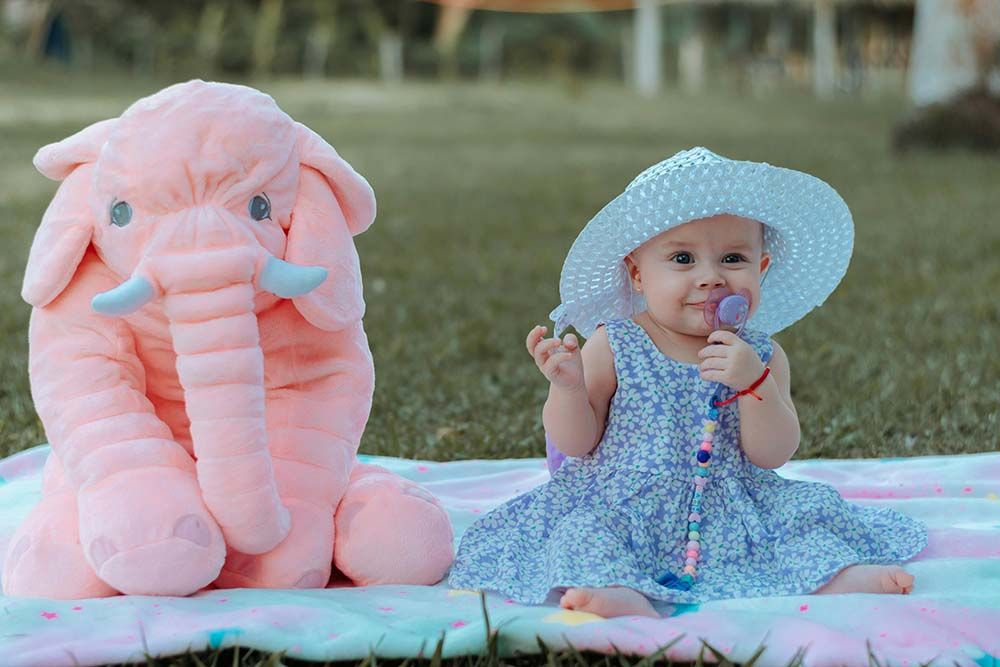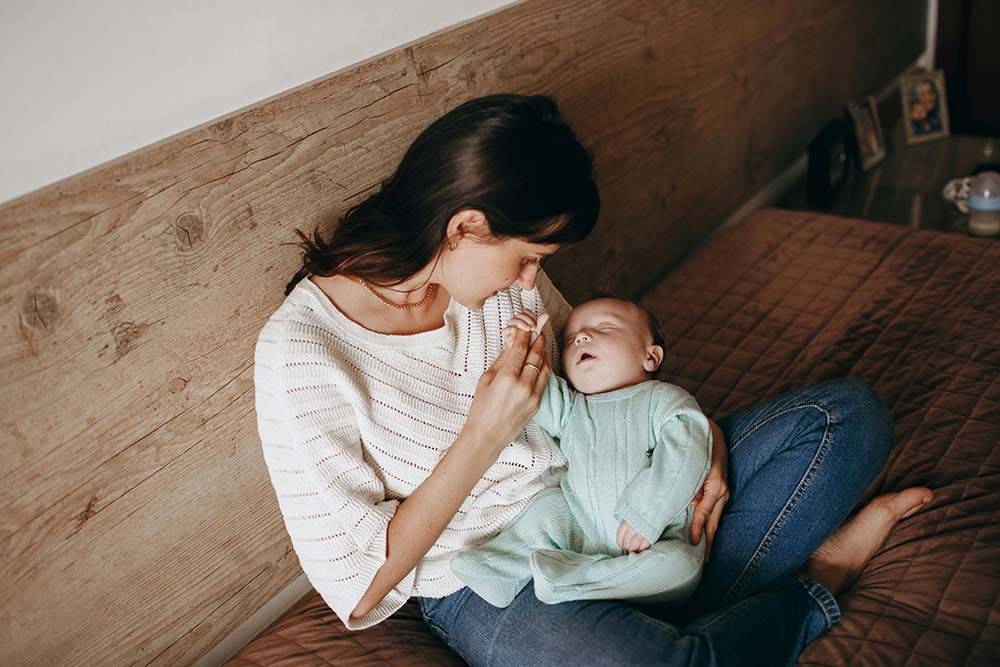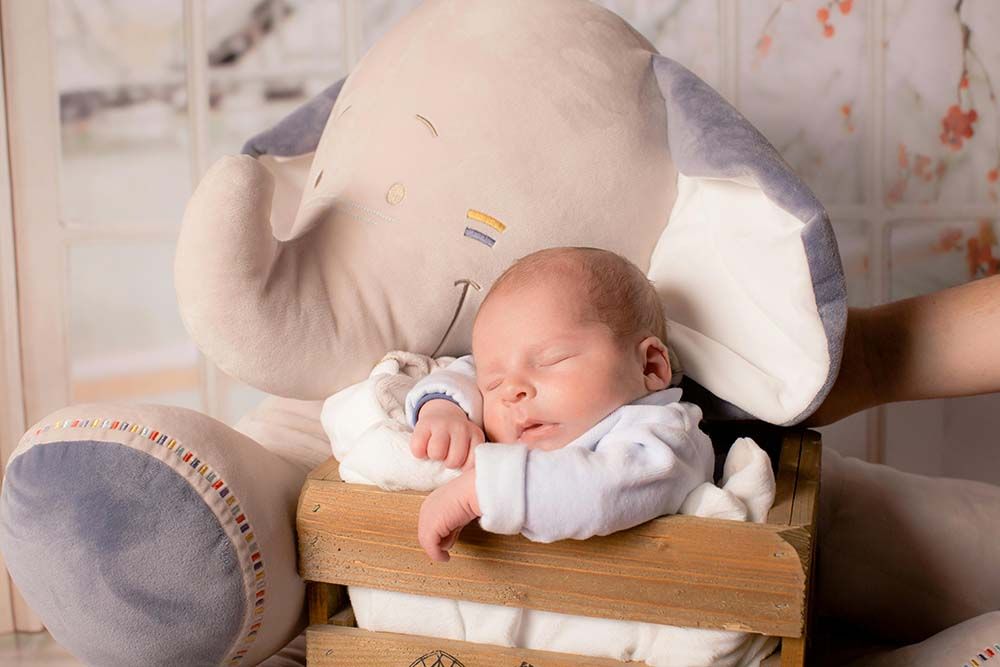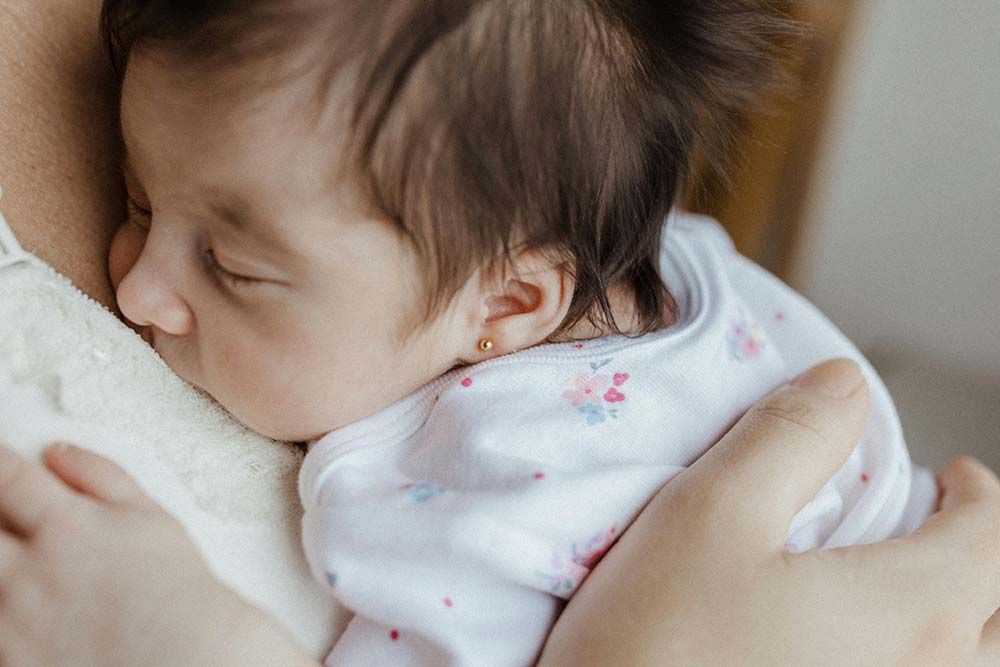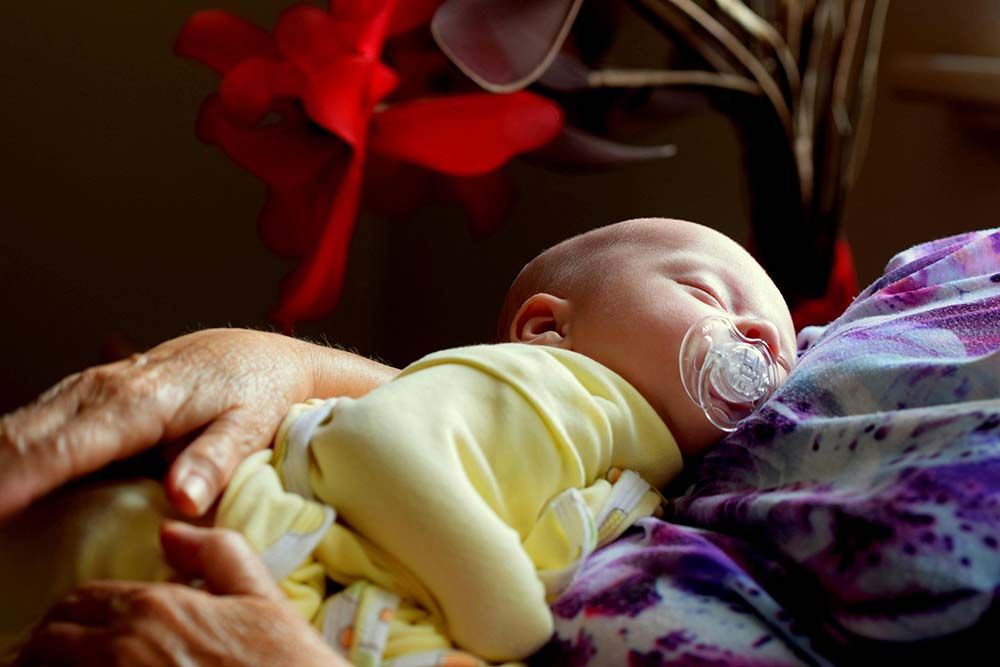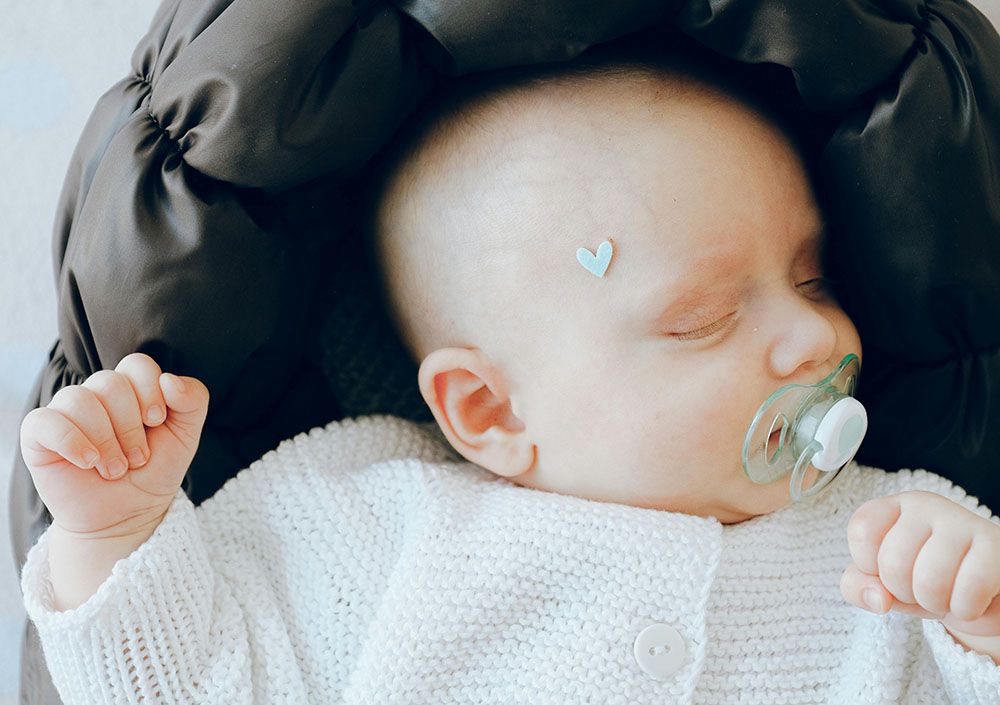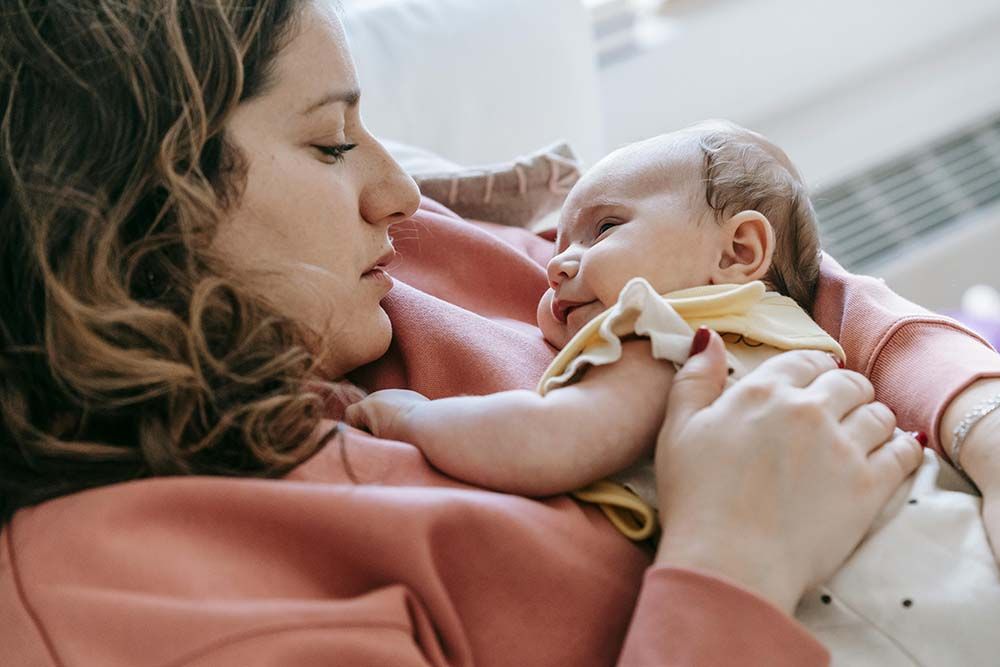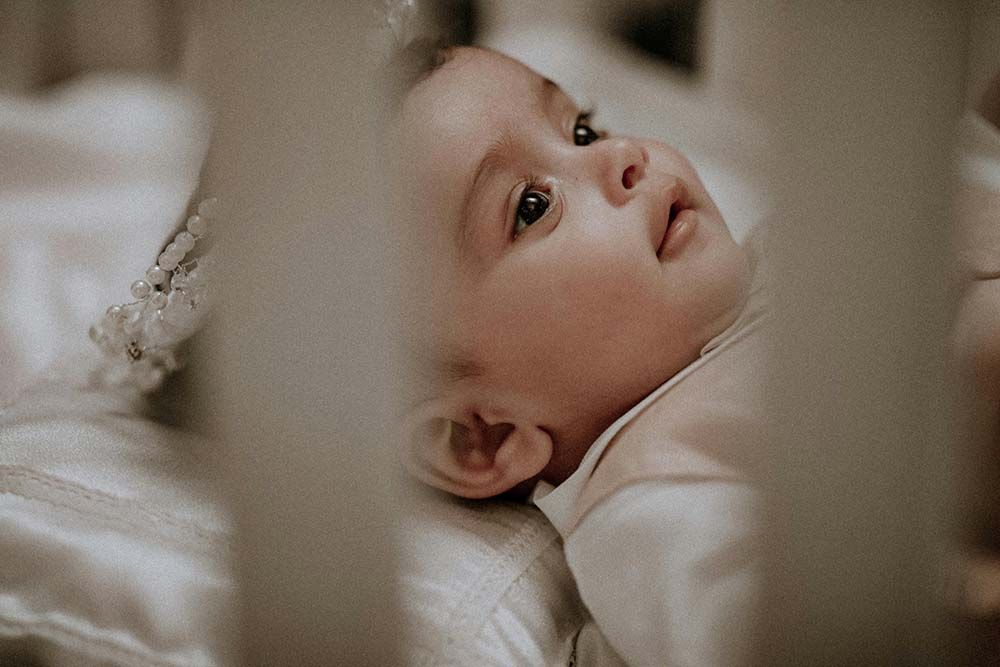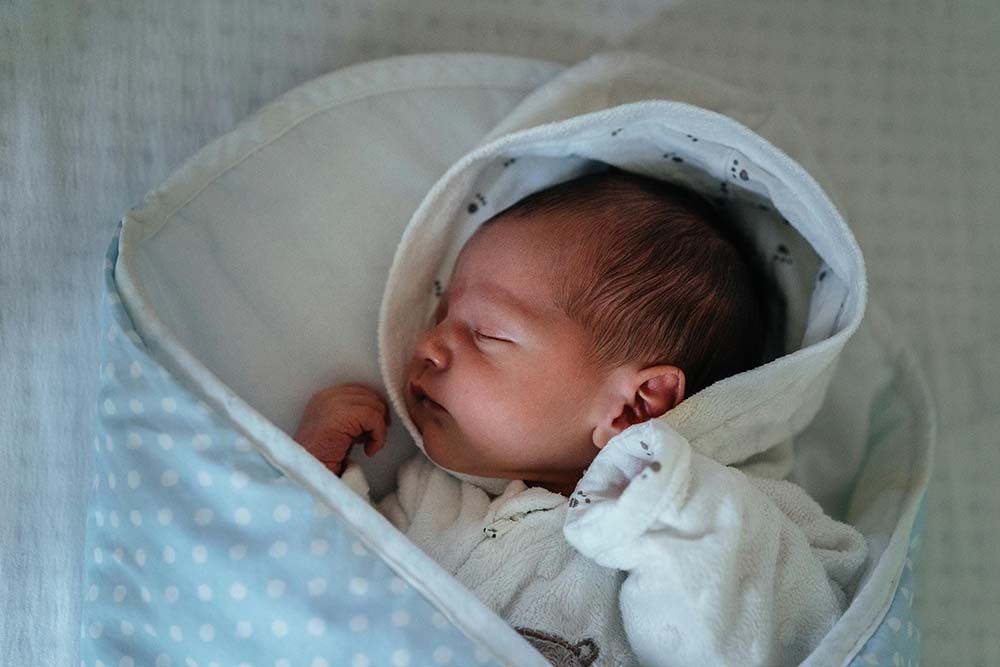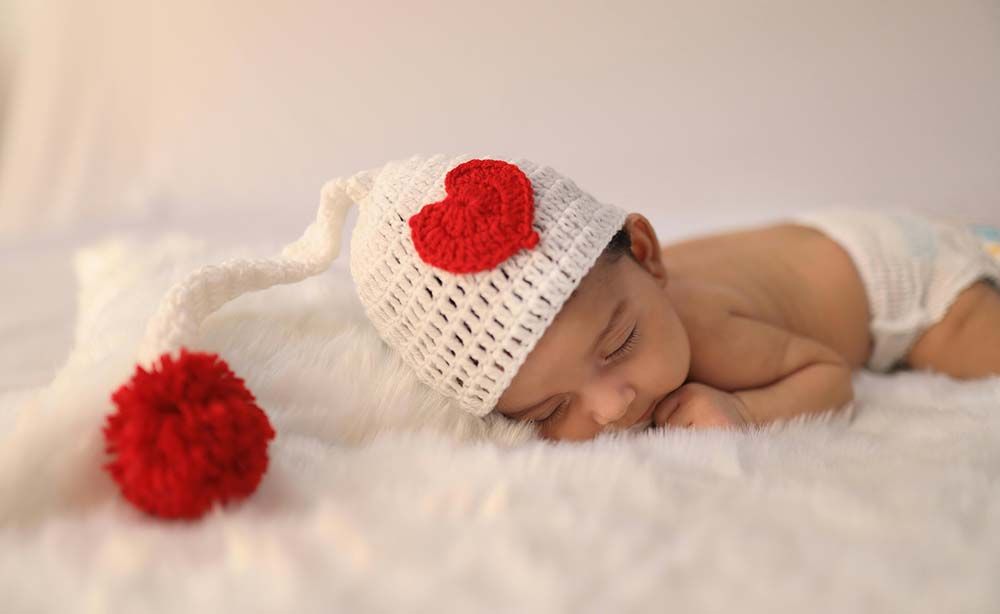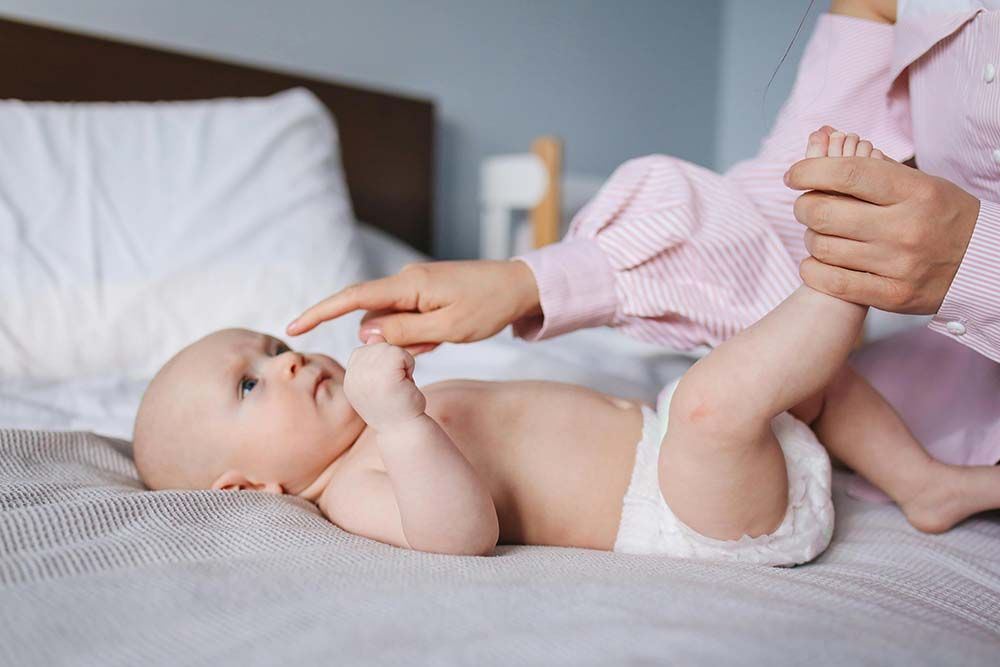

When you have a new baby, every milestone is exciting, from the first time to cooing, laughing, standing, walking, and so on. Eye contact is also an impressive milestone, which adds more interesting interactions between parents and babies, allowing parents to understand their baby’s demands more easily. So, when do babies make eye contact? What is the frequency of eye contact at different stages? And, is it normal for babies to avoid eye contact?... This article will explain to you the related questions, welcome to read continually to get your answer.
Track your baby’s every milestone simply
There are various subtle or noticeable milestones for each baby. Moonycare Baby Track App will be a powerful assistant for new parents to record these changes. Except that, it also helps parents manage sleep, feed, diaper and more daily routines. If you haven’t found a suitable baby track app, welcome to free download the app to make your parenting easier.
IN THIS ARTICLE
Why is Eye Contact Important in Babies?
When do Babies Make Eye Contact?
How Much Eye Contact is Normal for Babies?
Is it Normal for Babies to Avoid Eye Contact?
How to Encourage Eye Contact in Babies?
When Should I Worry about my Baby Not Making Eye Contact?
Why is Eye Contact Important in Babies?
Eye contact is crucial for infants' emotional development and social cognition. Research shows that infants begin to connect with their parents or caregivers through eye contact in the early stages after birth, and this interaction has many effects on their growth:
Emotional connection
Eye contact is an important way for infants to establish emotional connections with their parents. When infants make eye contact with their parents or caregivers, they feel loved and cared for, which enhances their sense of security and trust. This emotional connection is critical for infants' emotional and mental health development.
Promote social cognitive development
Infants begin to understand the intentions and emotions of others through eye contact. Studies have found that infants learn how to interpret other people's expressions, emotions, and movements during eye contact, which is crucial for their subsequent social interactions. For example, infants gradually learn to judge other people's interests based on the direction of their gaze and then respond accordingly.
Promote language development
Eye contact helps language learning. When infants make eye contact with their parents or caregivers, it is usually accompanied by voice communication. Language learning is not only promoted through hearing, but also through visual interaction, especially when infants see each other's facial expressions and mouth shapes, they can better understand and imitate language.
Stimulates brain development
Research shows that early social interactions, especially eye contact, stimulate brain development. When babies make eye contact, the social-related areas of the brain are actively exercised, which helps them better understand complex social situations and emotional expressions in the future.
Enhance emotional regulation ability
When babies feel anxious or upset, eye contact can bring them comfort. The eyes of parents or caregivers can convey a message of love and support, helping babies calm down and gradually learn to regulate their emotions.
When do Babies Make Eye Contact?
Babies usually begin to make eye contact within the first few months of life, and this process develops gradually. Here are some key developmental stages:
Birth to 1 month: Newborns can make responses to light and moving objects, but their vision is still blurry because their visual system is not fully developed. They can only see objects about 20-30 cm away. At this stage, babies may make eye contact with their parents unconsciously.
1 to 2 months: Around 1 month, babies begin to consciously track moving objects and can see faces more clearly. They may begin to try to make eye contact with their parents, especially when the face is close to them. They will begin to pay attention to their parents' eyes and expressions and will respond to their parents' smiles or other expressions. Although this communication may be short-lived, it is still a beginning of communication and a manifestation of the baby's initial recognition of the surrounding environment and people.
2 to 3 months: By 2 months, babies have made significant progress in eye contact. They begin to make eye contact with their parents more consciously. At this stage, babies may look at their caregiver's face when they are awake and make eye contact for a longer time, sometimes up to several minutes. This shows that babies begin to have a stronger interest in the people around them and establish emotional connections and understand the surrounding through eye contact.
3 to 6 months: At this stage, babies' eye contact becomes more active and persistent. When parents or other caregivers look at their babies, babies will actively respond and even begin to convey emotions through their eyes, such as seeking attention, expressing happiness or anxiety through their eyes. At this time, eye contact becomes an important way for babies to communicate and socialize emotionally. Babies will not only express their needs and emotions through their eyes, but also use them to explore the reactions and emotions of others.
6 months and above: As babies' eye coordination and vision develop further, their eye communication ability will continue to develop and become more diverse and complex. At this time, babies are able to have deeper emotional interactions with their parents through eye contact and show more social cognitive behaviors in the interaction. They begin to better understand the eyes and expressions of others and use eye contact to direct attention or engage in more complex social interactions. For example, infants may seek confirmation or imitate the expressions of others through eye contact.
In general, infants are capable of some degree of eye contact from birth, usually becoming noticeable when they are around 2 to 3 months after birth, and becoming more active and complex as their vision develops, their eye coordination improves, and their social skills gradually improve. Eye contact is an important marker of infants' emotional and social development and a key way for them to connect with their parents and others. One should know is that the developing speed may be different for each baby. Some babies may begin it very early, while others may take longer to reach this stage. Slight delays are usually normal as long as the baby is performing normally in other aspects (such as weight gain, motor skills, language development, etc.).
How Much Eye Contact is Normal for Babies?
The frequency of eye contact in infants varies depending on individual differences, age, emotional state, and environment. While there is no fixed "normal" standard for measuring the frequency of infant eye contact, there are some general guidelines that can help you determine whether your infant's eye contact is within the normal range. Here are some key points about the frequency of infant eye contact to help you better understand the development of this behavior.
- Newborn stage (0-2 months): May be about 5-10 brief eye contacts per day, depending on the frequency of interaction and the environment.
- 2-6 months: May make eye contact with their parents 10-20 times or more per day, each lasting from a few seconds to a few minutes.
- 6-12 months: May make 20-30 or more eye contacts with their parents every day, with each contact lasting longer.
It should be noted that each baby is unique, and the frequency of eye contact may be affected by individual differences (such as personality, health status, etc.) and environmental factors (such as surrounding noise, light, etc.). So as long as the baby is performing normally in other aspects (such as weight gain, motor skills, language development, etc.), slight delays are usually normal.
Is it Normal for Babies to Avoid Eye Contact?
It is common for babies to avoid eye contact at certain stages. For example, in the neonatal period (0-1 month), babies may not always actively make eye contact. This is because their vision is still in the initial stage of development, and the visual world is blurry to them. They may react more to light and strong visual stimulation rather than consciously make eye contact. Moreover, babies at this stage spend most of their time sleeping and have limited awake time, so it seems that they are avoiding eye contact.
In addition, around 2-3 months, babies may go through a stage of excessive curiosity about their surroundings. At this time, they may be attracted by various sounds, lights, and moving objects around them, and thus ignore eye contact with caregivers at certain times. For example, when there is a colorful rotating toy in the room, babies may keep staring at the toy and temporarily not look at their parents' eyes. This is a normal manifestation of infants' cognitive development. They are exploring the world around them and their attention is distracted by new things.
At the same time, affected by emotions and environment, babies will also have this behavior, such as:
1. Tiredness or sleepiness: When babies feel tired or sleepy, they may avoid eye contact and choose to close their eyes or turn their eyes elsewhere. This is a way for babies to express fatigue, indicating that they need to concentrate and rest, and cannot process visual and emotional information at the same time.
2. Overstimulation or anxiety: If babies are in a noisy or unfamiliar environment, or meet strangers, they may avoid eye contact to cope with excessive stimulation or feel uneasy. This is a stress response for them.
However, if babies avoid eye contact for a long time and frequently, it may be a sign of some potential problems. For example, vision problems, hearing problems, emotional or psychological bed, autism, etc. But these require continuous observation of the baby's overall state to be determined. If you have any concerns about your baby's eye contact, it is recommended to consult a pediatrician or a professional child psychologist as soon as possible for timely evaluation and intervention.
How to Encourage Eye Contact in Babies?
1. Face-to-face interaction: Since babies have limited vision in the early stages, try to interact with them at close range and make sure your faces are at the same height, which allows them to see your face and eyes more clearly and helps with eye contact.
2. Respond to your baby's gaze promptly: When your baby tries to make eye contact with you, respond to their gaze immediately. Respond with a gentle voice, smile, or other positive expression. This positive feedback can boost your baby's confidence and encourage them to make more eye contact.
3. Use rich facial expressions: Babies are very interested in human faces, especially the eyes, mouth, and changes in expression. By exaggerating your facial expressions (such as smiles, surprise, frowns, etc.), you can attract your baby's attention and encourage them to make eye contact with you for longer.
4. Have a conversation with your baby: Have a gentle conversation with your baby, even if they can't speak yet. You can talk to them in a soft voice, describe what you are doing, or simply tell them how much you love them. For example, when you find that your baby is interested in an object or activity, you can respond to their interest through eye contact and language. Babies will be interested in your voice and respond to you through eye contact. .
5. Strengthen eye contact in daily activities: Try to maintain eye contact with your baby during daily activities such as feeding, changing diapers, and holding. These activities not only build intimacy, but also promote baby's concentration. When you observe an object or event together, you can point to the object with your finger and say its name. This "pointing-naming" interaction not only promotes the baby's language development, but also helps them learn to follow your gaze and pay attention together.
6. Reduce external interference: To help babies better focus and make eye contact with you, try to create a quiet and comfortable environment. Avoid too much external interference, such as TV, mobile phones, or other noise. This will make it easier for babies to focus on you and interact with you more deeply.
7. Choose the right time: Choose a time period when the baby is emotionally stable and energetic to interact. For example, when babies have just woken up or are full, they are usually more alert and willing to make eye contact with you. Avoid interacting when they are tired, sleepy, or distracted.
8. Use a baby mirror: You can place a safe baby mirror in the baby's safety seat, stroller, or room. Babies are usually very interested in their own image. They will observe their expressions through the mirror and gradually learn to make eye contact with themselves. You can also interact with babies through the mirror to help them better understand faces and expressions.
9. Use black and white contrast cards: In the early stages of babies, you can use black and white contrast cards to attract their attention. These cards can help babies exercise their visual ability and guide them to focus their eyes on specific patterns. As babies grow older, more colorful cards and patterns can be introduced to help them develop color perception.
10. Interactive games: Play some simple interactive games. Hide and seek is a classic baby game that can help babies practice eye contact and anticipation. You can cover your face with your hands or a blanket, and then suddenly reveal your face and say, "Meow!" This game is not only fun, but also helps babies learn to expect and respond to your appearance.
11. Imitation games: You can try to imitate the baby's expressions, sounds or movements, such as when they smile, you also smile back; when they frown, you also make a similar expression. This interaction not only strengthens the connection between you, but also helps babies learn how to express emotions.
12. Respect your baby's emotions: Sometimes babies may temporarily avoid eye contact because they are emotionally uncomfortable or anxious. In this case, respect their feelings and give them some time and space. Do not force your baby to make eye contact, but wait patiently until they are ready to interact with you again.
When Should I Worry about my Baby Not Making Eye Contact?
There are two crucial timing to pay attention. One is 3 months old, and the other is 6 months old.
About 3-4 months: Generally speaking, babies aged 3-4 months have begun to show a strong interest in the people and things around them. Normally, babies at this stage will be attracted by their parents' voices and facial expressions, actively look into their parents' eyes, and their eyes will be more agile and move with their parents' movements. If babies at this stage rarely or almost never actively seek eye contact, for example, when parents or caregivers try to interact with them, they always look away or only focus on other objects, parents need to pay attention. Around 6-9 months: At 6-9 months, babies' social and cognitive abilities are further developed. They are not only able to actively make eye contact, but also express their emotions and needs through their eyes. If babies at this stage still continue to avoid eye contact, do not respond to the gaze of others, or appear indifferent or apathetic when others try to get their attention, this may be a sign of potential problems.
Except for age, parents should make judgments combined with other behavioral performance.
1. Lack of social response: If the baby does not respond to other people's social behaviors in addition to not making eye contact with others, such as not responding positively to smiles, hugs, calling names, etc., then there may be problems such as developmental delay or autism. Normal babies will smile back when they are smiled at, turn their heads to find the source of the sound and make eye contact with the other when they hear their own names, while babies with problems may completely ignore these social signals.
2. Delayed language development: Eye contact helps language learning to a certain extent. If the baby does not make eye contact with others and his language development is obviously behind his peers, for example, he has not yet uttered simple syllables at around 1 year old, or does not respond to simple language instructions, this is also a cause for concern. Because in the normal language learning process, babies observe their parents' mouth shape, expression and other clues through eye contact, and lack of eye contact may affect language input and understanding.
3. Accompanied by repetitive stereotyped behaviors: When babies do not make eye contact with people and have repetitive stereotyped behaviors, such as clapping, shaking their bodies, rotating objects, etc., this may be a typical symptom of autism. These behaviors are usually a way for babies to stimulate themselves, and they lack due attention to the people and environment around them, including neglect of eye contact.
4. Rule out vision or hearing problems: If the baby has vision or hearing problems, they may avoid eye contact or not respond to sounds. If you suspect that your baby has vision or hearing problems, it is recommended to take them for professional examinations as soon as possible.
If you have encountered these behaviors or you are pretty concerned about your baby’s development, it is recommended to consult a pediatrician or child development specialist for an evaluation.
Final Thought
All in all, age is not the only standard to make judgment. Some babies may develop faster while some may slower. Thus, parents don’t have to rush to draw a conclusion in a short period of time. Instead, it is encourage parents to observe and record your baby’s eye contact and interactions in daily life. When you decide to seek medical help, these recordings may be very useful for doctors as a reference.




